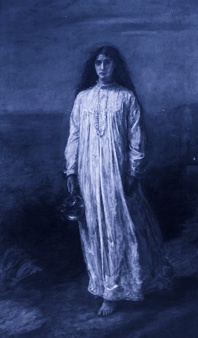Are sleepwalkers moonstruck?

Sleepwalking is the term for a sleep disorder where the person concerned will move to an upright position in bed, or get up and walk around without waking up. It is also referred to as somnambulism, which derives from lat. »somnus« = sleep and »ambulare« = to wander. A further outdated term is »lunatism« and stems from the former belief that the light of the full moon coaxes the sleeper into leaving the bed. This misconception is scientifically disproved: sleepwalking takes place outside the lunar cycle.

During an episode of sleepwalking, those affected can carry out all kinds of tasks, from moving items around to eating to driving a car. The eyes are open and fixed, the face without any expression. It is often said not to approach a sleepwalker or not to wake them. In the early days, it was feared that this could cause them psychological harm. Today, we know there is only a danger of irritation or of an accident. It is recommended to take the sleepwalker by their arm and to lead them back to their bed. The next morning, the sleepwalker does not remember anything or only dreamlike fragments of what happened that night. Not a pleasant thought at all …
There is a famous scene in William Shakespeare’s »Macbeth«, where Lady Macbeth is described sleepwalking in her last appearance. The open eyes are mentioned here specifically: »You see, her eyes are open.« Thereupon, the piece ends with the well known, dramatic death of the protagonist.
Against this background it is good to know that the full moon is not to blame for all of this. Although, it has surely watched one or the other wandering over the rooftops.

(Painting: John Everett Millais, The Somnambulist, 1871)
